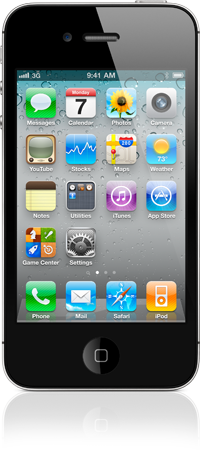Bloomberg reports of some interesting details behind the Apple / Verizon deal that made possible for the two companies to announce the iPhone 4 on Verizon starting February 10. The Verizon iPhone, as you may know, was one of the most anticipated devices in the United States because of the 4-year long AT&T exclusivity and the reported poor performances of the carrier in some areas.
First off, about the lack of Verizon branding on the CDMA iPhone 4, it looks like Verizon simply had to get along with it as Apple never puts logos on their devices and they really wanted to have the device in their portfolio anyway.
To reach a deal, Apple and Verizon had to reconcile different approaches to branding. Verizon puts its stamp on other manufacturers’ devices, including phones from Research In Motion Ltd. and Motorola. By contrast, only Apple’s name appears on the iPhone.
“They don’t put a lot of logos on their phones,” McAdam said in the interview. “So that wasn’t a major issue for us.”
Watching the success of the AT&T-Apple partnership may have led Verizon to accept a similar deal, said Jean-Louis Gassee, a former Apple executive who is now a venture capitalist at Allegis Capital in Palo Alto, California.
As also noted by Verizon COO McAdam and Apple’s Tim Cook at the special media event yesterday, Apple and Verizon had been working closely for years to develop a CDMA-enabled iPhone. Rumor has it the next device to sport native CDMA capabilities will be the iPad. Still, to test the CDMA functionality directly on the Cupertino campus, Apple let Verizon engineers install a series of cell towers:
The companies erected Verizon cellular towers at Apple’s Cupertino, California, headquarters to check the phone’s signal and avoid the reliability troubles of the iPhone at AT&T. The two sides also had to agree to swap inside information about future products.
One of Verizon Wireless’s top engineers – David McCarley, its executive director of technology – worked on Apple’s campus for more than a year. He helped Apple understand its CDMA technology, McAdam said. Apple was given “their own laboratory to play with,” he said.
Plus, Bloomberg also reports McAdam himself used a prototype of the CDMA iPhone ahead of the official announcement. But how long did it take for the CEOs of the two companies to close a deal? Well, one day.
McAdam and Cook inked the final deal after negotiations that also involved Apple CEO Steve Jobs and Verizon CEO Ivan Seidenberg, McAdam said.
We probably worked six or nine months on the technical side of this and saw we could make this work,” he said. “Then we did the commercial side. The commercial deal took us a day.
From a commercial standpoint, the deal is the same as the AT&T’s one: the carrier buys iPhones from Apple, and resells them at a subsidized price with a two-year contract. For a full summary of all the details behind the Verizon iPhone, head over Bloomberg’s article. [MacRumors via Bloomberg]


